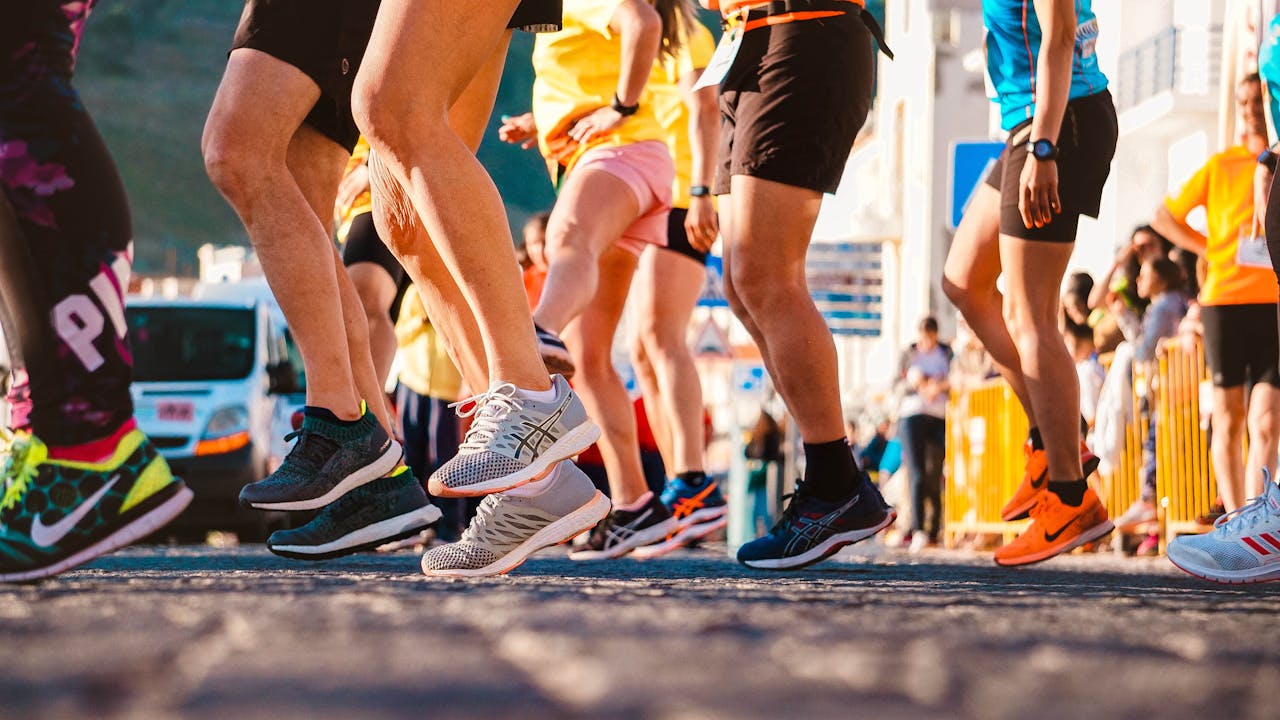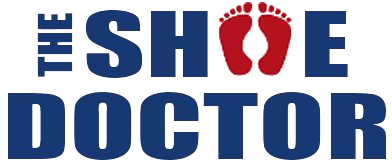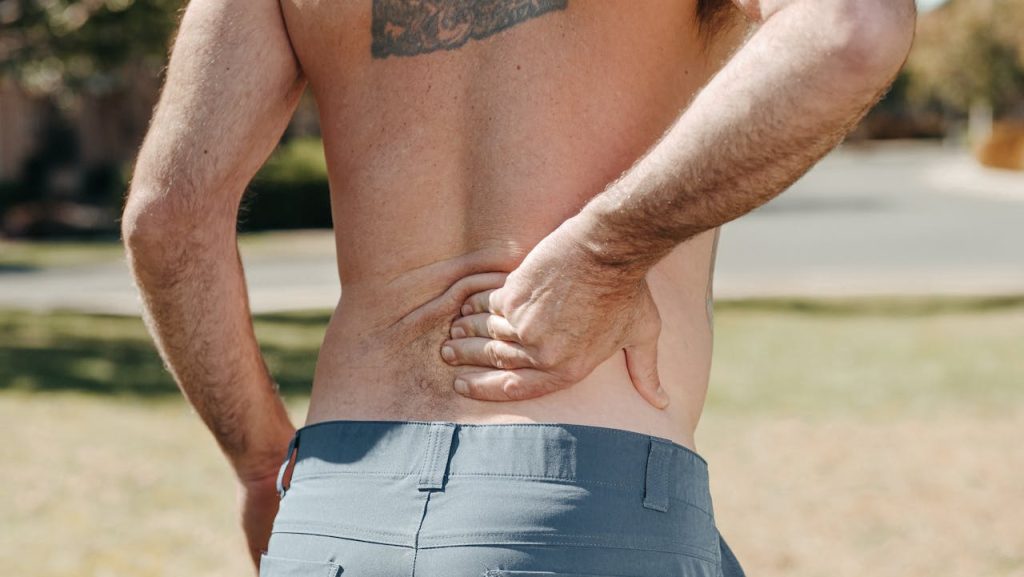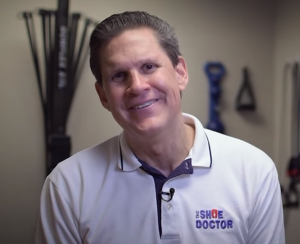Flat feet often cause knee pain through changes in the way the feet and legs align during walking or standing. When the arches in the feet drop, this shift affects how the knees move and bear weight. In many cases, the knees roll inward, which puts more stress on the joints and nearby muscles. This link is well known in healthcare and shown in studies across different age groups. Simple checks by a doctor or physical therapist can spot flat feet and their effect on knee mechanics. Custom shoe inserts or simple exercises often help ease pain and improve how the legs move. The next section covers how these changes work and what steps can help manage symptoms.
Key Takeaways
- Flat feet can throw off this natural alignment between the feet and knees, leading to knee pain.
- That’s where proper arch support and stable footwear come in, which keep your knees aligned and reduce joint stress.
- Muscle imbalances and rotational stress from flat feet can lead to knee pain, which is why targeted strengthening and stretching routines are key.
- Routine self-evaluation and early detection of symptoms can detect the connection between flat feet and knee pain, facilitating prompt treatment.
- Tailored orthotics and weight control go a long way to alleviating knee pain and optimizing joint health in the flat-footed.
- Seeking medical attention for chronic or severe knee pain is important for diagnosis and treatment planning.

The Foot-Knee Connection
Flat feet, or planus foot morphology, can change how the lower limbs work. This link with knee pain often starts with biomechanics. When the foot arch collapses, it alters alignment, increases pronation, and stresses the knee joint. Research shows almost a third of feet with pronounced flatness have knee pain on the same side. The table below shows how these changes happen:
|
Flat Foot Effect |
Biomechanical Change |
Knee Impact |
|
Collapsed arch |
Excess pronation |
Rotational force on knee |
|
Loss of medial support |
Tibia and femur misalignment |
Joint stress, cartilage damage |
|
Reduced foot stability |
Compensatory leg movement |
Increased knee pain risk |
|
Poor shock absorption |
Altered gait mechanics |
Higher wear on knee cartilage |
The Foundation
Your foot is the foundation of your body. When the arch is flat, it shakes up posture from the bottom up. A strong foot arch positions the leg and knee correctly. A weak unstable foot causes bad posture, which in turn disturbs your knees. Research with the SAI backs up the role of arch height in knee health. A weak base stresses the knee and can create or aggravate pain.
The Chain Reaction
Flat feet typically initiate an avalanche of leg-related changes. As the arch collapses, the foot pronates, potentially causing the knee to twist. This action places stress on the joint and potentially causes cartilage degradation, particularly in the medial tibiofemoral compartment. Research has revealed that alterations in foot posture impact the entire kinetic chain, predisposing the knee to pain. Eventually, these compensations might result in wear and tear that’s visible on MRI.
The Misalignment
Flat feet can shift the tibia and femur out of alignment, leading to either varus or valgus knee alignment. Misalignment increases joint stress and pain. Older adults experiencing flat feet exhibit increased cartilage loss and knee osteoarthritis. Untreated foot deformities exacerbate knee pain. Alignment is everything, says Johnston, both for the health of knees and for preventing injury.
The Rotational Stress
Too much foot motion increases twisting forces on the knee. The MCL bears a good deal of this stress, risking strain or injury as a result. Flat feet can contribute to problems like iliotibial band syndrome, particularly for active adults. Controlling these torsional stresses with arches supports or foot orthoses can help reduce pain and safeguard the knee long term.
The Muscle Imbalance
Flat feet can weaken muscles in the foot, legs and hips. The foot’s intrinsic muscles can weaken, requiring larger leg muscles to compensate and thereby disrupt knee stability. Imbalances like these can contribute to knee pain or dysfunction. Foot and hip muscle-strengthening exercises, like toe curls or hip bridges, could potentially help reestablish this equilibrium and enhance knee function.
Beyond The Arch Collapse
Flat feet, or pes planus, can shape how force moves up through the legs and may set off a chain of issues in the knees. Not all flat feet are the same, and the severity of knee pain depends on many factors—foot type, weight, and activity level. Understanding these links helps guide better prevention and treatment strategies for people of all ages, from active young professionals to older adults facing knee osteoarthritis.
Flexible vs. Rigid
|
Type |
Definition |
Impact on Knee Pain |
Foot Function/Mechanics |
Treatment Examples |
|
Flexible |
Arches appear when not weight-bearing |
May cause pain when standing/walking |
Foot absorbs shock, may overpronate |
Supportive insoles, rehab |
|
Rigid |
Arches absent even when off the ground |
Often linked with persistent pain |
Limited flexibility, poor shock absorption |
Custom orthoses, surgery |
Flexible flat feet tend to fold under load but appear normal with no weightbearing. Rigid flat feet are flat even at rest, and typically cause more constant pain, so we’ll first focus on those. Both variants alter the way feet and knees absorb impacts. The Staheli Arch Index (SAI), which ranges from 0 to 1.20 with a median of 0.43, assists in depicting how flat of a foot. Only 30% of those with the flattest feet (highest SAI) report knee pain and cartilage damage on MRI, yet not all flat footed patients feel pain. Treatments differ: flexible types often do well with orthoses and strengthening, while rigid forms may need more structured intervention.
The Weight Factor
Any extra pounds add extra stress to flat-footed knees. It accelerates cartilage degradation, which manifests as medial tibiofemoral (TF) joint space narrowing — commonly observed in knee osteoarthritis. This can cause your foot to become even more flat for balance, causing swelling pain. Controlling your weight can relieve pressure on your joints. Even minor dips in BMI reduce knee pain risk. Weight control, regular check-ups, and orthoses can keep knee health in check, especially as we age.
Your Activity Level
High impact moves, such as running on hard surfaces, can increase knee pain for flat-footed individuals. Lower-impact options—such as biking or swimming—allow you to remain in shape with less stress on your knees. Mixing up workouts and utilizing supportive shoes or orthoses provides assistance as well. Staying active keeps your muscles strong, which helps keep the knee joint stable. A healthy activity routine is key for joint health, regardless of age.
Finding Flat Feet Knee Pain Relief
Flat feet can alter the alignment of your foot with your ankle and knee. This shift causes abnormal pressure on the knee joint. Studies prove that around 33% of those with extremely flat feet face knee pain on most days. Seniors seem to be most at risk, with nearly a quarter of those over age 55 experiencing knee pain. Cartilage damage is more common in flat footed individuals, involving various knee compartments at notable frequencies. To control this pain is to control the very habits, footwear and muscle strength that need micro-adjustment.
Effective strategies for managing knee pain linked to flat feet:
- Wear shoes with proper arch and heel support.
- Use orthotic insoles or custom orthotics.
- Then follow with targeted foot, leg and core exercises.
- Stretch calf and hip muscles to support joint alignment.
- Consult a health professional for tailored advice.
A Personal Recovery Blueprint
Your own personal recovery blueprint means crafting a plan that suits you. This method puts you in charge, allowing you to establish tangible targets and monitor your improvements as you combat knee pain associated with flat feet. Each recovery journey is unique. Some individuals may just need to incorporate more exercise, while others may find that a switch up in shoes or daily habits can help. A blueprint can help you identify what works, what doesn’t, and what you need to adjust. A professional can help you set goals, identify barriers, and craft solutions tailored to your lifestyle. This can be empowering, as you maintain motivation and focus.
Phase One
- Elevate your feet and knees whenever you can to minimize pain and swelling.
- Apply ice to your knees for 15–20 minutes, several times per day, to reduce pain.
- do light foot and calf stretches–toe curls, calf raises, etc.4.
- Wear shoes with good arch support and shock-absorbing soles.
- Examine your daily schedule. Be aware of which activities or movements exacerbate your pain.
- Modify your motions during these activities to reduce stress on your knees. For instance, if standing all day is painful, instead experiment with taking more breaks or using a stool.
Phase Two
- Supplement with strength exercises such as towel scrunches, heel raises and mini-squats to help build up the muscles in your feet and knees.
- Keep a log or record in a simple chart your pain levels as you increase duration or intensity of exercise.
- Begin to wear orthotic insoles. This will increase alignment and relieve pressure from your knees and arches.
- Once a week, check back in with it. Modify your plan if something isn’t working or you observe progress – less pain, improved movement, etc.
Phase Three
This stage is focused on maintaining your progress and maintaining a pain-free existence. Stay with a combination of stretching, balance, and strength exercises each week. Select shoes that support your feet, particularly if you’re on them a lot. Keep an eye on your knees for new pains or swelling and adjust your plan accordingly. Explore knee-friendly habits like maintaining a healthy weight, staying active, or cross-training with swimming or cycling. Arrange doctor or therapy check-ins every few months. They can help catch issues early and transition you as your needs shift.

When To Seek Medical Advice
Flat feet can alter the path of weight through the lower limbs which can stress the knee joint. Knee pain is usually not far behind. If pain lingers on most days, even after home care or rest, it’s time to get a professional opinion. In a recent study, 22% of knees in older adults were painful most days, indicating that knee pain associated with foot structure is not uncommon. Don’t dismiss pain that persists, worsens, or returns even after self-care. Persistent pain can indicate problems deeper in the cartilage or alignment, not just sore muscles.
You really should see a doctor if the knee pain persists for more than a couple of weeks or if it continues to keep you from everyday activities such as walking, climbing stairs, standing or even sitting for extended periods. Otherwise, individuals with flat feet are 30% more likely to have regular knee pain. They are 40% more likely to have inner knee cartilage damage. If pain restricts your life or causes you to quit activities you’d normally enjoy, that’s an obvious indicator to seek assistance. It’s not just about getting by — it’s about preventing them from spiraling.
If you observe changes in the knee or foot’s appearance or movement, such as the arch flattening or knees bowing/turning inward, this may indicate a more significant issue. Varus knee malalignment, when knees bend outward, causes the foot to flatten, in order to maintain balance. This places increased strain on the knee and foot, resulting in increased pain and increased risk for cartilage degradation. Those with the flattest feet—roughly a third—experienced weekly same-side knee pain. It’s a great reason to get checked out by your doctor.
Family history is important as well. If you have close relatives with osteoarthritis and feel pain or notice changes in your feet, seek medical attention. What we found was that any additional soft tissue in the midfoot or any alterations of foot shape increases the risk of knee pain and cartilage injury. If the tests indicate cartilage damage, as in 45% of medial tibiofemoral and 58% of medial patellofemoral compartments, then this is a clear indication that medical assistance is required.
Conclusion
Flat feet tend to push the knees out of alignment and cause pain. The mechanics of the foot hitting the ground influences the motion of the knee. Minor alterations in foot form can cause actual pains further up. For most, basic interventions, like improved footwear or strength training, reduce the discomfort. First steps count, as well. Identifying foot shape at an early age can prevent knee pain from developing. The journey to reduce pain is different for everyone. Some require a physician, others respond to DIY repairs. Every narrative varies slightly, however the connection remains obvious. Got knee pain with flat feet? Consult a foot expert. Talk to me, share your story, pose a question, and exchange tips in the comments below!
Frequently Asked Questions
1. What causes the link between flat feet and knee pain?
Flat feet alter your gait, impacting knee alignment. This can put additional strain on your knees, resulting in discomfort or damage in the long run.
2. Can flat feet lead to long-term knee problems?
Yes. If untreated, flat feet can lead to persistent knee pain and even joint issues due to misalignment of the legs.
3. What are common symptoms of flat feet-related knee pain?
Symptoms are often aching or sharp pain around the front or sides of the knee, particularly after walking or standing for long periods.
4. How can I relieve knee pain caused by flat feet?
Wearing supportive shoes, orthotic insoles, and performing strengthening exercises can help alleviate pain. These steps optimize foot alignment and reduce stress on the knees.
5. When should I see a doctor for flat feet and knee pain?
Consult a healthcare professional if your knee pain is persistent, severe, or impacting your daily life. Early treatment can avoid serious problems.
6. Are children with flat feet at risk for knee pain?
While some children outgrow flat feet, if you’re developing knee pain it should be addressed. Early intervention can assist healthy joint development.
7. Can exercises help with flat feet and knee pain?
Yes. Specific exercises can reinforce foot and leg muscles, enhance balance, and minimize knee discomfort. Ask a doc for optimal regimen!
Struggling With Back or Knee Pain? Find Real Relief With Custom Orthotics From The Shoe Doctor
If everyday movements leave you dealing with nagging back pain or aching knees, your feet may be part of the problem. Misalignment in your foundation can place extra stress on joints and muscles higher up in your body. At The Shoe Doctor, our custom orthotics are designed to correct that imbalance, reduce pressure, and restore comfort so you can move freely again.
With over 20 years of experience, Russell uses advanced 3D foot-mapping technology to create orthotics tailored to your exact foot shape and movement. These orthotics do more than add cushioning—they improve alignment, support your stride, and help prevent pain from coming back. Through our partnership with the Spine & Injury Medical Center in San Jose, we also make sure your whole-body mechanics are addressed for lasting relief.
If you’re in the South Bay Area, schedule your free consultation today. Let The Shoe Doctor help you move pain-free and reclaim your day, starting from the ground up.
Disclaimer
The materials available on this website are for informational and entertainment purposes only and are not intended to provide medical advice. You should contact your doctor for advice concerning any particular issue or problem. You should not act or refrain from acting based on any content included in this site without seeking medical or other professional advice. The information presented on this website may not reflect the most current medical developments. No action should be taken in reliance on the information contained on this website, and we disclaim all liability for actions taken or not taken based on any or all of the contents of this site to the fullest extent permitted by law.


